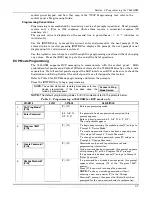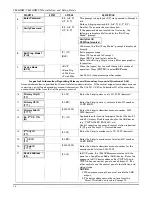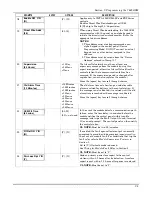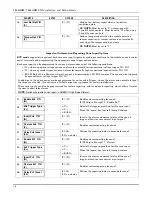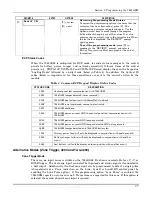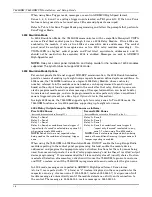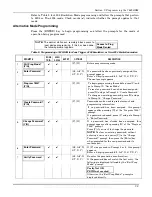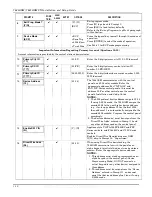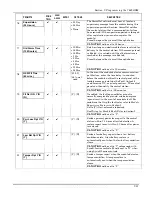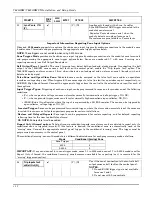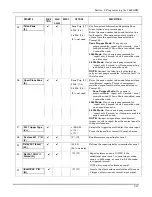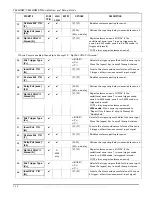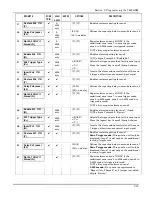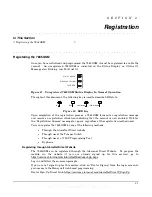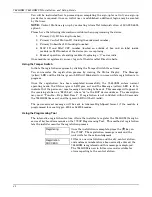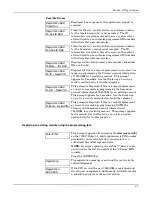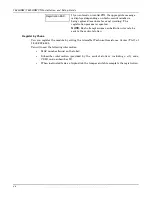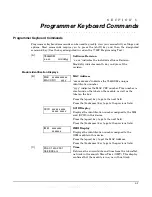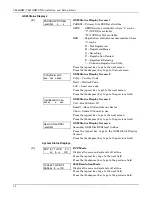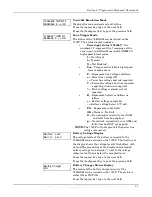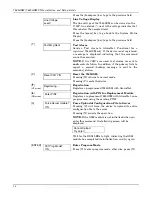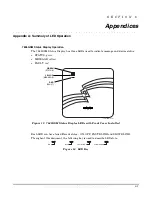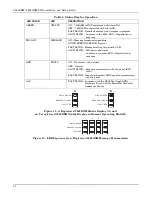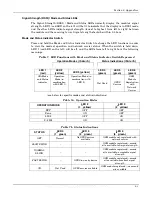
7845GSM/7845GSMCN Installation and Setup Guide
3-12
PROMPTS
ZONE
TRIG.
4204/
2-4204
ENTRY OPTIONS
DESCRIPTION
23
Lynx Panic Y/N
(Y)_
✔
[Y], [N]
Applies only if used with a Lynx, LynxR or
LynxR-EN control LRR trigger connected to the
module's zone terminal.
Reports a Panic alarm on zone 3 when the
module detects a single pulse on zone 1.
No restores are generated for a Panic alarm.
Important Information Regarding Zone Input Options
If desired,
4204 mode
supports two optional hardwire zone input triggers by making connections to the module’s zone
6 and/or zone 7 terminals and programming the appropriate zone trigger options below.
NOTE
:
These triggers are not available when using 2-4204 mode.
Zone Trigger Mode
provides six hardwire zone input triggers by making connections to the module’s zone terminals
and programming the appropriate zone trigger options below. Zones are numbered 1-7, with zone 2 serving as a
reporting zone only (see Bell Output Zone below).
Bell Output Zone 1 (and 2):
The zone 1 terminal can detect both pulsed and steady signals. If connecting the bell
output to the 7845GSM zone causes a bell fault on the control panel, enable the "Trip Inputs 1or2" option. The
7845GSM reports an alarm on zone 1 (fire) when it detects a pulsed signal and an alarm on zone 2 (burglary) when it
detects a steady signal.
Telco Zone and Open/Close Zone:
Dedicated zones can be assigned as the telco fault zone and/or an open/close
(arm/disarm) reporting zone. When triggered, these zones report a telco line fault or open/close report respectively, in
ADEMCO High-Speed format. Connect the appropriate trigger from the control to the selected zone input for each of
these options.
Input Trigger Types:
Triggering of each zone input can be programmed to cause an alarm under one of the following
conditions:
•
(V+), where a positive voltage causes an alarm for normally low connections (voltage trigger, NO, NC)
•
(V–), where a ground trigger causes an alarm for normally high connections (open collector, NO, NC)
•
(EOLR) End of Line Resistor, where the input is supervised by a 2K EOL resistor. The zone can be triggered by
open collector, voltage trigger, NO, NC.
Inverted Trigger:
Zones can be programmed for inverted trigger, where the alarm and normal states of the zones are
inverted; this can serve a fail-safe supervisory purpose for certain installations.
Restore and Delayed Reports:
Zone inputs can be programmed for restore reporting, and for delayed reporting
(allowing time for the user to abort false alarms).
UL NOTE:
Zone restoral must be enabled.
Report Only if Armed option:
To help eliminate redundant reports, zone alarms can be restricted to report only if a
conditional zone is triggered (armed). If this feature is desired, the conditional zone is automatically used as the
“arming” zone. Connect the appropriate control panel trigger to the conditional (arming) zone. The trigger must be
programmed as necessary in the control panel.
The conditional (arming) zone on the module is a different dedicated zone for each programming mode, as follows:
Mode
Conditional (Arming) Zone
Zone Trigger
7
4204 4
2-4204 8
IMPORTANT:
If any zone (zones 1-6 in zone trigger mode, zones 1-3 in 4204 mode, zones 1-7 in 2-4204 mode) is set for
Report Only if Armed, the conditional (arming) zone becomes unavailable for reporting (as it is reserved for the
“arming” trigger connection).
24
Trip Inputs 1or2
w/Bell Out (N)_
✔
[Y], [N]
Use if the zone 1 connection to the control's bell
output causes a bell fault on the control panel.
NOTES:
1. If used, EOLR trigger type is not available
for zones 1 and 3.
2. Do not use with Lynx controls.
WWW.DIYALARMFORUM.COM
WWW.DIYALARMFORUM.COM






